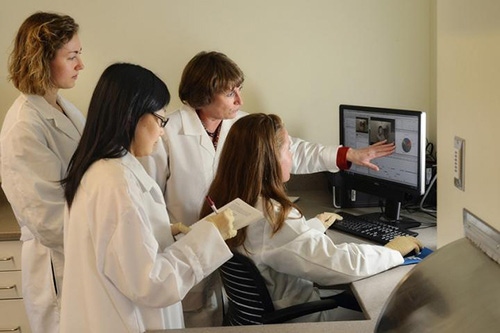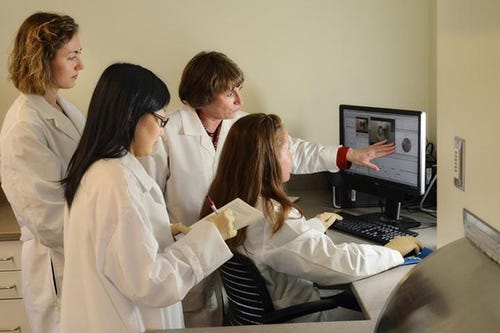LEDs in display case improve taste of milk
Virginia Tech researchers find that exposure to certain light changes flavor profile of milk.
December 6, 2016

Light-emitting diode (LED) lights that are being installed in milk display cases across the country do more than just reduce energy bills; they also help milk taste better, Virginia Tech researchers have found.
The exposure to certain light changes the flavor profile of milk. Milk fresh from the dairy should taste sweet and rich, but when people describe milk that was exposed to conventional fluorescent lights, they used words like "cardboard," "stale" and "paint-y."
The researchers found that while the new LED lights reduce those negative profiles, there is still work to be done in packaging to ensure that milk tastes like consumers expect.

Working in the Virginia Tech Food Sensory Lab with students, professor Susan Duncan recently posted research showing that installing LED lights in milk display cases not only reduces energy bills but also helps milk taste better. Photo: Virginia Tech.
"We want to help figure out ways to return to the fresh taste of milk that our grandparents experienced when it came straight from the dairy," said Susan Duncan, a professor of food science and technology in the Virginia Tech College of Agriculture & Life Sciences.
"Milk is delicious and nutritious, and we want to find ways to protect both of those characteristics to help the industry and provide an even better product to consumers," said Duncan, who is also associate director of the Virginia Agricultural Experiment Station and an affiliated researcher with the Fralin Life Sciences Institute.
Duncan's findings were recently published in the Journal of Dairy Science.
Milk consumption has been decreasing for several decades, and Duncan said the lighting used in retail display cases that changes the taste of milk may be one of the factors in this decline.
One of the nutrients in milk — riboflavin — oxidizes when it is exposed to fluorescent lights. This reaction not only causes the taste to change but can also reduce the nutritional content of milk. Duncan's tests show that when milk is stored in the traditional translucent plastic jugs, these reactions can take place in a little as two hours. Opaque milk packaging that protects riboflavin and other nutrients from lighting helps deliver that fresh, sweet, rich taste.
Duncan conducted a series of tests at the Virginia Tech Sensory Evaluation Laboratory that showed that LED lights leave milk with a more satisfactory taste that consumers prefer over milk that has been exposed to fluorescent lights.
If the traditional translucent jugs are used, milk is more likely to undergo oxidation and have its flavor changed. Duncan's tests show that when light-blocking pigments in HDPE or plastic PET containers were used, the flavor wasn't changed as dramatically, and consumers thought the milk tasted fresh. Although improved packaging costs more than traditional jugs, Duncan said the cost is worth it to maintain the best flavor of milk.
However, Duncan said more work still needs to be done on packaging to protect the flavor profiles even further, as every milk drinking experience should deliver a positive experience.
"The research that is being done around this new lighting gives us momentum to explore other ways that we can preserve the natural taste of milk," Duncan said.
This project was funded by checkoff money from the National Dairy Council as well as support from the U.S. Department of Agriculture's Hatch program and the Virginia Agricultural Experiment Station at Virginia Tech.
You May Also Like


.png?width=300&auto=webp&quality=80&disable=upscale)
